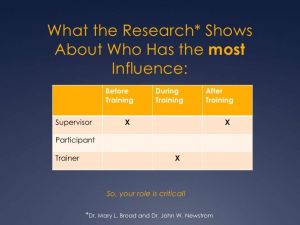
It is 9.15 a.m and there are only 5 people in the room. Asha, the Training Manager is on the phone desperately calling her colleagues. “Are you coming or not? We are supposed to start at 9.00 ” she screams into the phone. Dhruv, her team member comes and whispers, “BB can’t make it. He has another meeting.”
“Sorry,” Asha looks sheepish. The invites went out two weeks ago. I can’t understand why these people don’t show up. After all, we are doing this for their benefit.”
“Let us wait for sometime,” requests Dhruv. Those who are there want time to finish their emails and are quite happy to start later.
Lokesh, one of the participants informs Asha that he has received an email and needs to step out for 2 hours for a Very Important Meeting with his boss.
I take a deep breath and center myself.
We finally start at 9.45 a.m with 15 out of the 20 who signed up for the session. The Leadership Development workshop goes off well and the feedback is very good but I am not hopeful about the sustainability of the action plans that participants have agreed on. I feel bad for Asha and Dhruv and the people in L&D who try very hard to create learning opportunities and don’t see the results.
After spending 20 years in the Learning and Development Industry, designing and delivering sessions for more than 6000 people across 50 or so companies, I have reached a Zen state when it comes to punctuality and presence of the participants at the start of the session. I know that this is only a symptom. This is a symptom of the state of Learning and Development in the company.
Over the years, I noticed some of the practices that Learning organizations follow that ensure not only the timely presence of the participants but also effectiveness of the intervention as a whole. The role and effectiveness of the facilitator and program content is only one part of the solution. The mindset with which the participant enters the training room has a huge impact on how the program goes off.
Here are 3 simple actions that can be taken before the training to make training programs attractive and sustainable.
1. Communication from the Line Manager – Many research studies including Broad and Newstorm’s research on Transfer of Training show that the role of the line manager is the most important in ensuring sustainability of training. An email or a quick chat from the manager outlining the objectives of the program, expectations from the participant and a promise of support before the session, will ensure that the participant will turn up on time and stay in the room. The Line Manager needs to make the link between the training and on the job success. Too often, training, especially ‘soft skills’ training is seen as an ‘HR agenda’ by the manager and there is a lack of seriousness about it. Successful L&D managers coopt the line manager and ensure that they are kept in the loop through the intervention.
2. Brand and Market the Training- Yes, we live in a world where there is a constant battle for eyeballs and ears. Even stuff that is good for you and the world like Milk or Cleanliness or Single Use Plastic Bans need campaigns and promotions to get traction. Just a boring old email telling participants to show up for training, unfortunately, is not enough. Sometimes, Training Managers feel that they are doing everyone a favor by organizing a program. Sometimes, it is mandatory to attend the session and the training invite becomes a summons. Yes, it is mandatory to wear seat belts and not talk on the phone while driving, but how many do it? So, it is important to be creative, design that colorful poster, give the program an attractive name, release some teasers , make a splashy launch for a long- term intervention, throw in some swag and ‘pull’ people into the training room. The facilitator has to step up and do a great job as well. But then you work with excited participants not bored or cynical ones which makes a big difference. The best results happen when the Facilitators and L&D folks work together to design the entire intervention.
3. Executive Signaling– I have noticed that in organizations that are serious about Learning and Development, a VSL- Very Senior Leader, opens the workshop with a few ‘words of wisdom’ to inspire and motivate the participants. When the sales managers of my pharma company client knew that their MD would be addressing them in the morning, they not only showed up on time but could connect the leadership training to the organization context. The MD, who was a skilled story- teller also motivated them to get the most out of training. Training Managers need to influence senior leaders and insist on a 10-15 minute signaling speech. Senior leaders who want to groom and influence their people must carve out time to address this captive audience. This is an opportunity to shape the minds and engage the hearts of the people. If senior leaders view training as a chore, a check box item or leisure activity that takes people away from the ‘real’ work, it is unlikely that the organization will get any results from the interventions.
If Asha and Dhruv ( not their real names) are reading this, I hope they can some ideas which will not only save them from frustration and embarrassment but will help them to get excellent results for their efforts in doing a very important job.
Note to self– Support and Influence Asha and Dhruv be more successful and make my work more meaningful.

